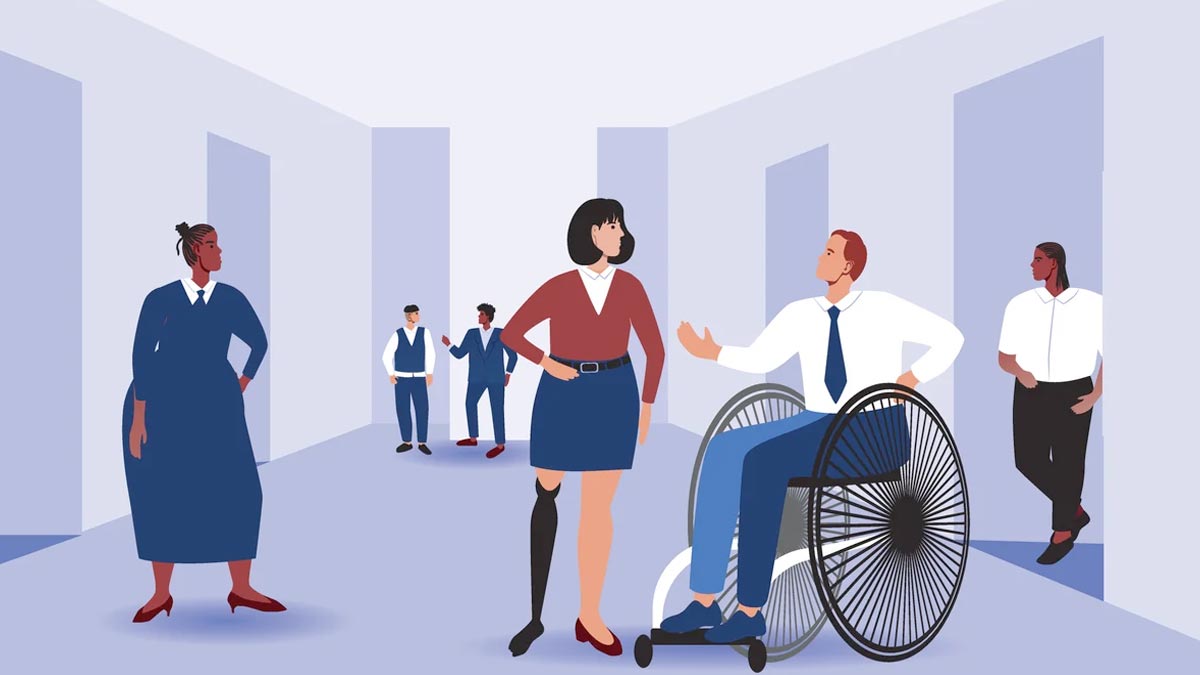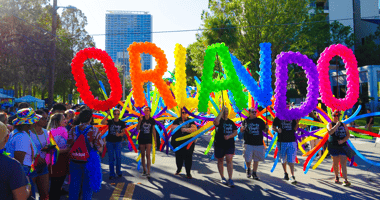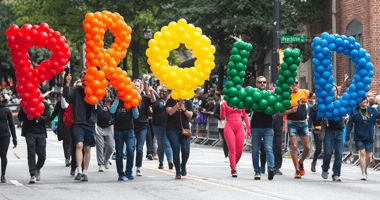Event planner's accessibility checklist
Creating accessible events is more than an aspirational idea; it's an event planner's responsibility that can make or break an event. During planning, it's critical to consider how to ensure everyone can participate regardless of their access needs. So, let's break down the essentials of planning an event that welcomes people of all body types and abilities.
Disability-Friendly by Design
Your event will almost certainly be more accessible if you include disabled people in your planning. Below are some things to keep in mind as you establish an overarching accessibility framework:
- Recognize that disabled individuals are stakeholders in your event, even if their presence may not be immediately apparent.
- Ensure the active participation of disabled individuals in planning roles, scheduled speakers and panelists, visual representations, and documentation.
- Allocate a section on your registration form for attendees to communicate their specific access requirements.
- Clearly outline and publicize your accessibility policy and the measures you have implemented.
- Establish methods for receiving and addressing feedback from the disability community.
- Compensate disability consultants similarly to other professionals providing services to your event.
- Incorporate disability into your anti-harassment, anti-discrimination, and diversity policies, acknowledging disability as a social and political category.
Want more help? Check out these examples of accessibility policies: Convergence, SXSW, National Conference of State Legislatures website policy.
Access Plan
It is crucial when planning your event to create an access plan. It will ensure you comply with legal requirements, adhere to your organization’s policies, and, most importantly, improve the event’s accessibility. An access plan outlines the specific steps needed to prevent and remove barriers to accessibility and when they will be taken. Consider the following when creating your event access plan.
- Assess the suitability of your facilities.
- Allocate seating specifically for individuals with disabilities.
- Arrange sign language interpretation for all events.
- Provide Communication Access Realtime Translation (CART) services to cater to individuals with hearing loss or auditory processing disorders who may not use sign language.
- Explore the possibility of offering wheelchair or scooter rentals through a reputable third-party vendor who can assume liability.
- Consider providing wheelchair-accessible shuttles for transportation.
- Designate an area for service animal relief.
- Establish an access team responsible for coordinating accessibility matters throughout the planning and execution of the event. Ensure their visibility by providing recognizable markers like shirts, vests, or hats.
- Implement a scent policy that encourages a scent-free environment to enhance accessibility.
- Designate a quiet space or room for individuals seeking a less stimulating environment.
- Utilize a public address (PA) system for effective communication.
- Ensure that all speakers, including audience members, use microphones for better audibility.
- Consider incorporating audio assistance systems like hearing loops for individuals with hearing loss who rely on hearing aids or other assistive technologies.
- Consider ways people with invisible disabilities can identify themselves to staff. A great example is the Hidden Disabilities Sunflower program, in place at over 200 airports world-wide, which uses sunflower lanyards to help airport staff identify travelers who aren’t easily recognizable as disabled, but need extra assistance.
For additional help in creating an access plan, check out this detailed checklist from the ADA as well as their guide for designing compliant events.
Venue Selection
Do your research because choosing an accessible venue is crucial. Your venue should offer seamless movement for all your guests and good lighting for people with low vision. More space for wheelchairs and mobility aids will not only benefit people with accessibility needs but will also help large crowds have space for a good experience.
- When evaluating buildings, check for doorways wide enough for wheelchair access, sufficient seating, adaptable spaces, and well-lit environments.
- Verify that restrooms can comfortably accommodate all guests, with considerations like grab bars and wider stalls--family style or gender-neutral restrooms are a big help.
- Assess the parking facilities. If your venue has a parking lot, ensure it has accessible parking spaces near the entrance.
- For march and parade routes, prioritize even and smooth surfaces, adequate seating for resting, accessible parking nearby, ground transportation options that are accessible, and arrangements for shelter in case of rain.
Navigability
Attendees should be able to move around the event space with ease. Navigability is not just about the physical layout of the venue but also about the ease with which guests can access information and services. Begin with clear, legible signage. This can guide guests toward entrances, exits, restrooms, and different activity areas within your event.
Seating Arrangements
Accessible seating is key. First, consider the space between tables and chairs. Adequate spacing allows easy movement for guests using mobility devices or requiring more space. Consider flexible seating arrangements that can cater to individuals with mobility aids and people of larger body sizes. Prepare to accommodate people with options like armless chairs. Allocate seating specifically for individuals with disabilities, positioning them in the front or near exits, and clearly marking the area to inform other attendees not to occupy those seats.
Event Staff Training
Staff are the backbone of your event. Ensure they’re trained in specific needs etiquette and are aware of the facilities and accommodations available. Be sure they are aware of how attendees can submit feedback on accessibility measures. By being prepared for the specific needs individuals may face, staff can interact respectfully, offer appropriate assistance, and address any concerns or inquiries regarding accessibility.
Brief all staff on appropriate communications language
- Refrain from using disability-related terms as insults, such as "crazy" or "hysterical."
- Avoid phrases like "wheelchair-bound" or "suffers from."
- The appropriate terms are “disabled”, “people with disabilities”, people with “access needs”
Website
Websites can be crucial both for planning and holding events. In addition to serving as a central hub of information, they provide easy access to registration forms, event itineraries, travel options, and accessibility accommodations for site facilities. An accessible event website not only ensures that everyone can access and navigate essential information about the event, but it also conveys that accessibility is an upfront consideration – that the event caters to people with a variety of abilities and needs. Including a website accessibility statement, like this one from Disability Rights Washington, provides information about the accessibility of the site and conveys your commitment to a friendly environment and social responsibility. It lets your attendees know that they are welcome and their needs have been considered.
When creating an accessible website:
- Include event accessibility information prominently, with a clear access plan and contact information.
- Content that makes use of high contrast is easier for some people to consume; tools that allow users to switch from light-on-dark to dark-on-light can also be helpful.
- Use skip navigation.
- Place links behind descriptive labels instead of “here” so screenreader users know where the links lead.
- Videos should be captioned and have accompanying transcriptions.
- Include alt text to provide additional information about images and videos.
- Avoid animations that flash.
- Avoid conveying text information in images.
There is a wealth of information about creating accessible websites at WebAIM and at Section 508.
Communication
Keep communication clear and considerate from the moment you start promoting your event. Make it known in your invitations and event descriptions that this is an accessible event that caters to a variety of abilities and needs. Share specifics about accessibility in advance, such as available facilities, nearby public transportation options, and any measures you're taking to ensure accessibility. This can help guests plan their attendance and feel reassured about their experience at the event.
Conclusion
Planning an event involves solving problems before they happen. This guide can help your event become accessible for people with access needs, so that everyone can participate and be comfortable. Taking these steps means more than ticking off a checklist – it’s about being an advocate for accessibility for all, and ensuring all attendees have an unforgettable, happy, and friendly experience.
Want to know what Congress is considering to make airline travel more accessible?




